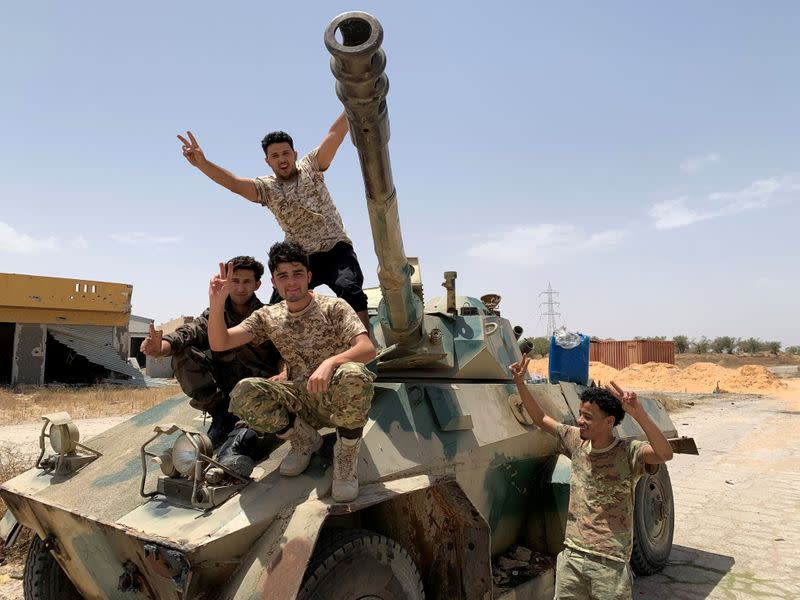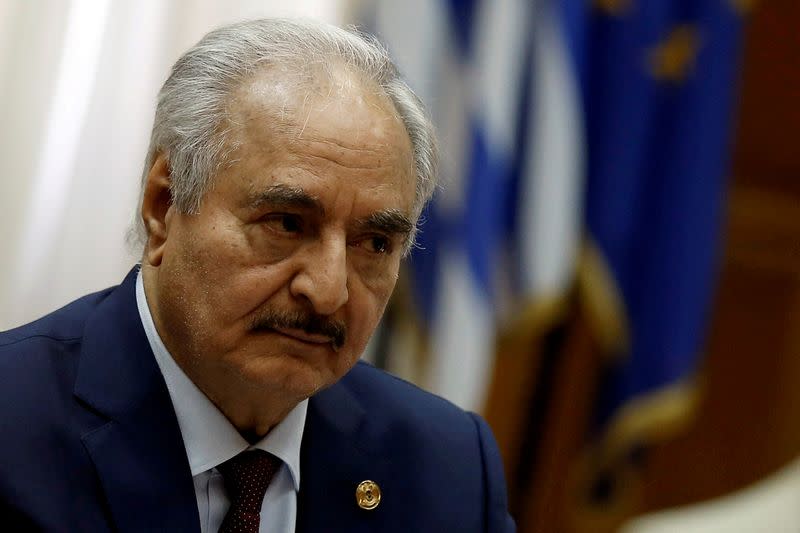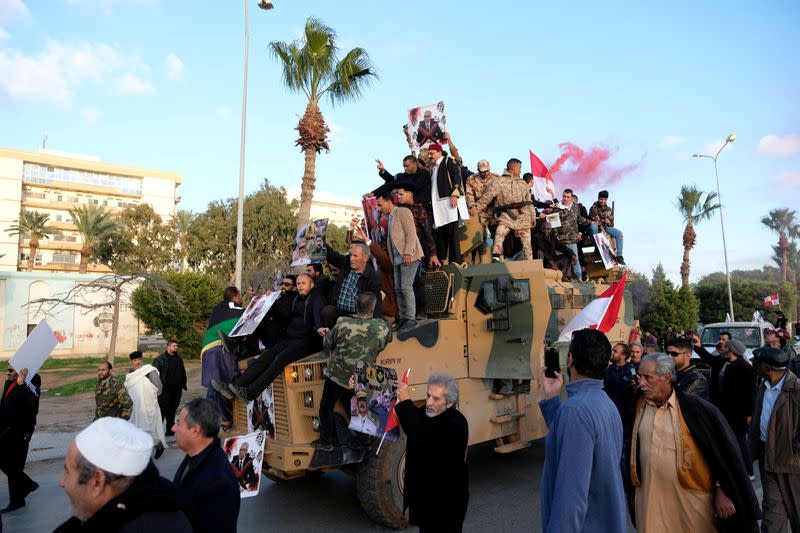Explainer: Untangling the conflict in Libya
CAIRO (Reuters) - Libya's conflict has taken a new twist after an attempt by eastern-based commander Khalifa Haftar to seize the capital, Tripoli, crumbled rapidly in recent weeks.
WHO'S BEEN FIGHTING WHO?
Haftar's self-proclaimed Libyan National Army (LNA) has been battling forces aligned with the Tripoli-based, internationally recognised Government of National Accord (GNA). Both sides are built from local armed factions, whose shifting loyalties have at times helped determine the course of the conflict.
Both have also depended heavily on foreign allies pursuing strategic and political agendas in Libya. Turkey stepped up its military support for the GNA in January, while Haftar has long enjoyed backing from countries including the United Arab Emirates, Egypt, Russia and Jordan.
HOW DID WE GET HERE?
Libya's fault lines began to surface nine years ago as local groups took different positions in the NATO-backed uprising that toppled Muammar Gaddafi.
An attempted democratic transition following his overthrow slid out of control as armed groups established local power bases and coalesced around rival political factions.
After a battle for Tripoli in 2014, one faction moved east where it set up a parallel government and branches of key institutions. It recognised Haftar as military chief as he began a long campaign against Islamist groups and other opponents in Benghazi.
The GNA emerged from a December 2015, U.N.-backed agreement that gave the international community a partner in a country where Islamic State was ascendant and migrant smuggling into Europe had surged. But eastern factions spurned the deal.
Instead, Haftar consolidated control of the east and swept through the south in early 2019 before launching his offensive on Tripoli in April last year.
WHO CONTROLS WHAT?
Current positions look very similar to those two years ago, with a dividing line on the northern shore at Sirte, roughly the midpoint of Libya's Mediterranean coastline.
The GNA and affiliated groups control Libya's densely populated northwest and the LNA holds the east. Allegiances in the south are more tenuous.
WHAT'S THE DAMAGE?
Nearly 400,000 Libyans have been displaced over the past nine years, around half of them since the Tripoli offensive began. Thousands more have died.
The conflict has cost the country tens of billions of dollars in lost oil revenue, caused extensive damage to infrastructure and homes, and led to rapid inflation and frequent power and water cuts.
WHAT CHANCE OF PEACE?
A weakened LNA may seek a deal. As Haftar's forces retreated last week the United Nations resumed indirect military talks to broker a ceasefire, and Egypt launched an initiative calling for a political solution.
The U.N. talks are part of a broader process aimed at resolving issues including the distribution of oil revenue, the make-up of a unity government and the future status of armed groups.
But previous efforts to end the conflict have stalled, with lulls used to regroup and rearm before fighting resumes.
GNA hawks have talked of pushing eastwards now they have momentum, while some in the east, where Haftar's future has been thrown into doubt by his military setbacks, have raised the prospect of partition.
WHAT HAPPENED TO THE OIL?
OPEC member Libya holds Africa's largest oil reserves, and produced 1.6 million barrels per day before 2011. Output has fluctuated sharply since, as factions blockaded facilities to press their demands and infrastructure was damaged.
Production climbed to around one million barrels from late 2016, before plunging to less than 100,000 bpd as the LNA's allies closed ports and pipelines in January.
That blockade has been partially lifted as GNA forces have advanced, with the southwestern fields of Sharara and El Feel reopening.
(Writing by Aidan Lewis; Editing by Giles Elgood)










